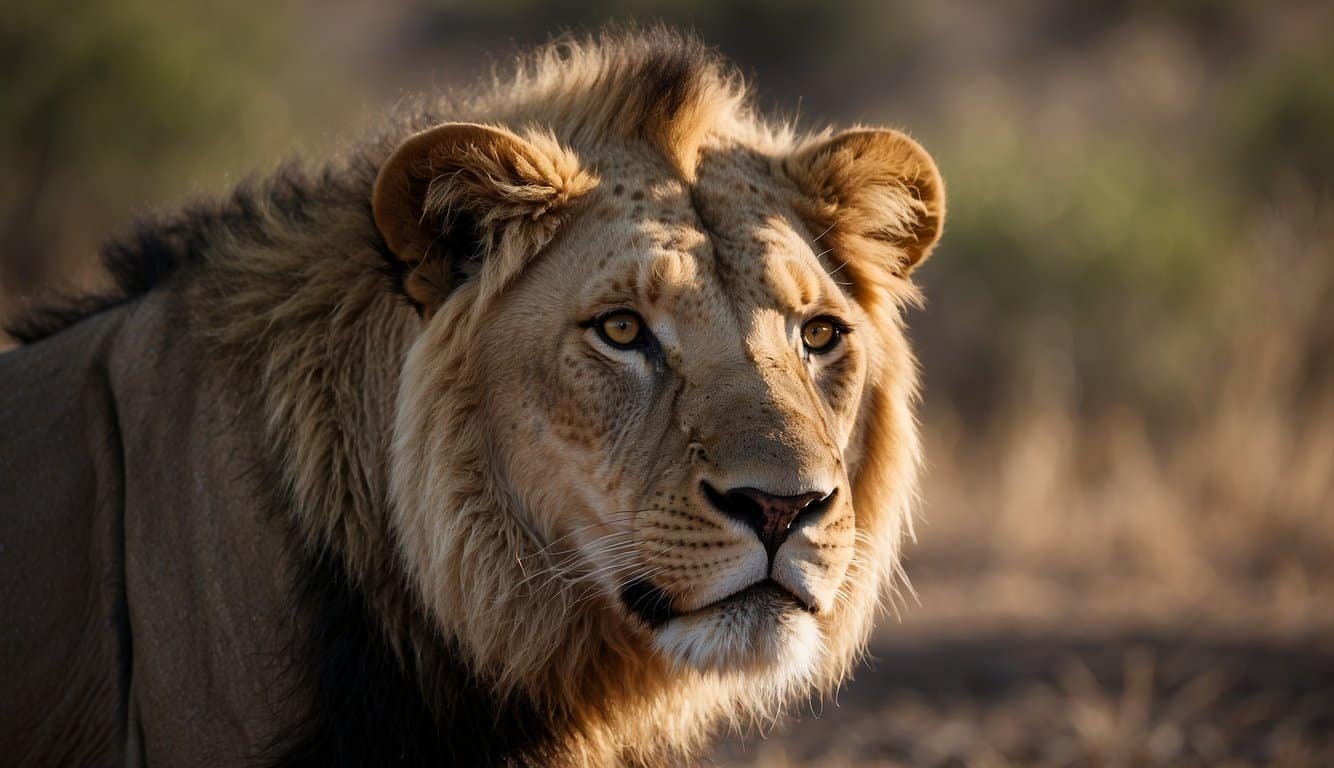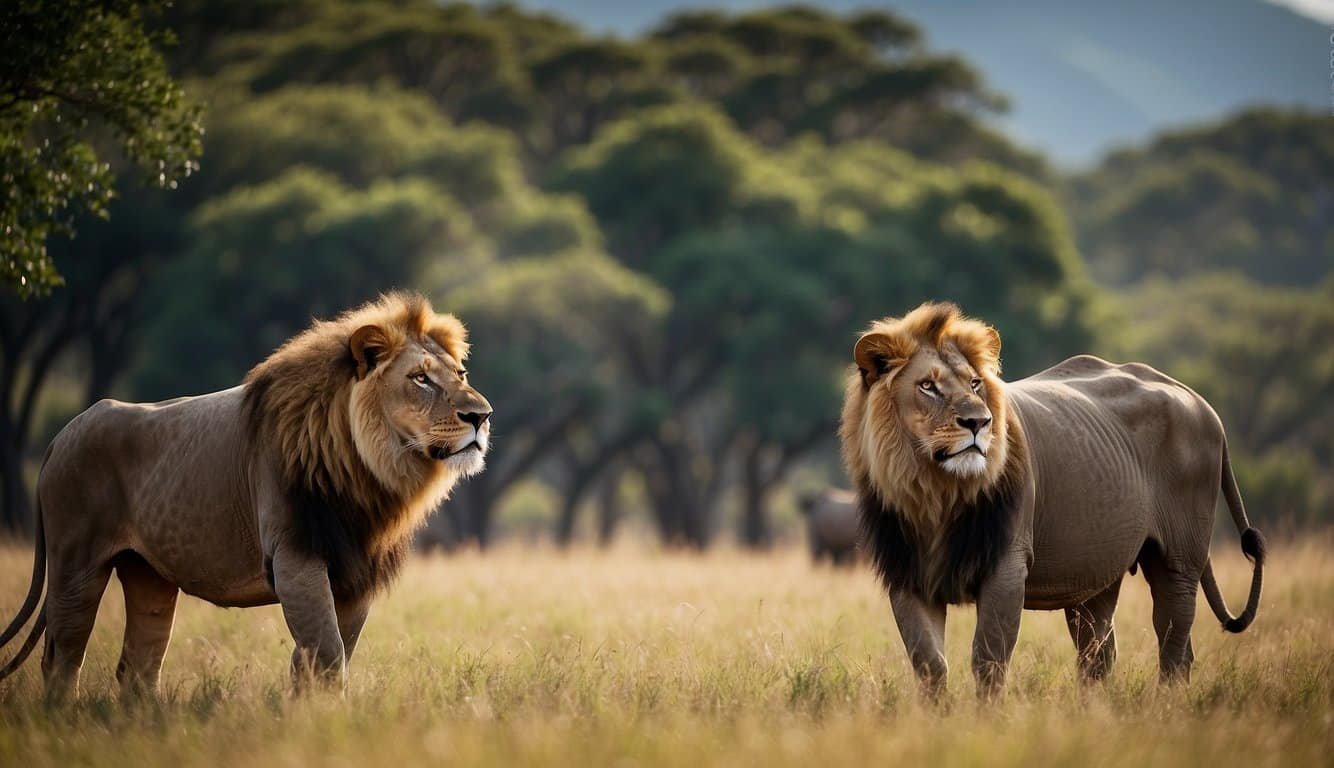Overview of Africa’s Big Five
Africa’s Big Five refers to five of the continent’s most iconic wildlife species: lions, leopards, elephants, rhinoceroses, and African buffalo. Traditionally, the Big Five were named by hunters for being the most difficult and dangerous animals to hunt on foot. Today, the term is more commonly used for wildlife safaris and conservation efforts.
Lions are social felines known for their majestic manes and are often labeled as “king of the jungle.” They predominantly live in the grasslands and savannas of Sub-Saharan Africa. Leopards are elusive and solitary, easily recognized by their rosette-patterned coat and are found in various habitats across Africa.
The African elephant, the largest land mammal on Earth, has two subspecies: the larger savanna elephant and the smaller forest elephant. Both are vital to their ecosystems as keystone species but face threats from poaching and habitat loss. The savanna elephant roams the plains, while the forest counterpart lives in the dense forests of Central and West Africa.
Rhinos in Africa consist of two species, the black rhino and the white rhino, both of which are under threat from poaching due to the demand for their horns. The black rhino is critically endangered, with several subspecies already extinct.
Finally, the African buffalo, known for its sturdy build and large horns, is a grazer that moves in large herds across the savannas and floodplains. Although not as threatened as the other members of the Big Five, they still encounter challenges like habitat fragmentation.
Explorers can observe these magnificent creatures in various national parks across Africa, where conservation efforts aim to protect them and their habitats for future generations. With their awe-inspiring presence, Africa’s Big Five are a significant attraction for wildlife enthusiasts around the world.
Threats and Conservation Efforts

Africa’s “Big Five”—lion, leopard, rhinoceros, elephant, and buffalo—face various threats that jeopardize their existence. Concerted conservation efforts are critical to ensure their survival.
Poaching and Illegal Hunting
Poaching remains a dire threat, especially for rhinos and elephants, fuelled by the demand for rhino horns and ivory. Conservation and behavior of Africa’s “Big Five” stresses the need for understanding both threats and wildlife behavior to bolster conservation measures.
Habitat Loss and Human Activities
Expansion of human activities and urbanization have led to significant habitat loss. The reduction in grassland, forest, and savannah spaces disrupts the natural ecosystem, affecting the elephants’ and other species’ livelihood.
Conservation Success and Challenges
Despite challenges, there have been successful reintroduction and protection measures in places like Kruger and Chobe National Parks. However, species such as the critically endangered black rhino face a precarious road to recovery.
Eco-tourism and Sustainable Practices
Eco-tourism initiatives contribute significantly to local economies and promote sustainable conservation. Tourists seeking more than just the Big Five are attracted to parks with diverse bird life, as noted by Not just the Big Five: African ecotourists prefer parks brimming with bird diversity.
Legal Protection and International Aid
International frameworks like CITES and the Endangered Species Act provide legal protection against wildlife trafficking. Countries including Kenya, South Africa, Botswana, Namibia, and Zimbabwe receive aid to support conservation efforts.
Engaging Local Communities
Involving local communities in conservation work by creating employment and education opportunities ensures long-lasting positive impacts. Communities play a key role in anti-poaching initiatives and the sustainable management of national parks.
The Big Five in Popular Culture and Media

The iconic Big Five animals of Africa—lion, leopard, rhinoceros, elephant, and Cape buffalo—are not only staples of safari tours but also a massive influence on various forms of popular culture and media, from arts and literature to film and fashion.
The Big Five in Arts and Literature
In the realm of arts and literature, the Big Five inspire a myriad of works that capture their grandeur and significance within African ecosystems. Paintings and sculptures often feature these animals to symbolize various human traits and emotions, while literary works include them as central figures in storytelling that explores themes of survival, nature, and adventure. The geographic distribution and profiles of human self-description in 56 nations also incorporate reflections of these animals’ characteristics.
Portrayal in Film and Television
Film and documentaries frequently showcase the Big Five, serving both entertainment and educational purposes. They provide viewers worldwide a virtual safari experience, often highlighting the challenges these animals face, such as habitat loss and poaching. Reality shows like Big Brother Africa have also weaved in African wildlife as a backdrop, highlighting the continent’s vibrant culture and ecology.
Marketing and Branding
Marketing and branding strategies frequently employ the Big Five as powerful symbols to evoke the exotic and untamed spirit of Africa. Safari tours capitalize on the allure of these animals, using them in advertising to attract tourists aiming to witness their majesty in person. Representations of the Big Five in branding can be seen in company logos, product packaging, and various promotional materials.
Influence in Fashion and Design
Fashion and design are not immune to the influence of the Big Five. They appear in high-end fashion as prints and motifs, demonstrating a blend of traditional and contemporary styles. Designers draw inspiration from the textures, patterns, and colors of these majestic creatures, translating them into clothing lines that capture the essence of the wild and the spirit of adventure inherent to the African landscape.

